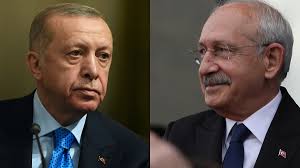According to Monday’s election results, Turkish President Tayyip Erdogan was in the lead, but he was only able to earn 49% of the votes needed to win the presidency.
The second round of the presidential election, usually known as a run-off, will now be held on May 28. When no presidential contender receives more than 50% of the vote, a run-off election is held.
Kemal Kilicdarolgu, Erdogan’s opponent, is anticipated to intensify his campaign over the next two weeks as the current president works to win re-election.
The 69-year-old president won over the districts affected by the devastating earthquake, which claimed more than 50,000 lives.
Despite a determined campaign, President Erdogan’s opponent learned the hard way on Monday that they could not defeat Erdogan.
Kilicdaroglu urged his fans, “Don’t give up.” “We will stand together and win this election.”
According to AFP, Erdogan received 49.5% of the vote while Kilicdaroglu received 44.9%. Sinan Ogan, a different nationalist contender for president, received 5.2% of the vote.
At 88.9%, the voter turnout set a new record.
With 321 of the 600 seats in the new parliament, the AK Party of the long-serving Turkish president and his allies appears to secure a majority, improving his chances of winning the run-off.
The winner has clearly been our country, Erdogan declared in a speech to cheering supporters at the AKP headquarters in the city of Ankara overnight.
If Erdogan is to defeat his main rival Kilicdaroglu, the nationalist Ogan—supported by 2.8 million voters—will prove to be a deal-maker.
Kilicdaroglu, the leader of the six-party coalition, vowed to win the election in the second round and accused Erdogan’s AK party of tampering with the election process and results.
able leader
In contrast to the less enthusiastic Kilicdaroglu supporters, Erdogan supporters were jubilant as the results came in. Feyyaz Balcu, a 23-year-old cyber security engineer, was sure that Erdogan could resolve Turkey’s economic issues, which led to skyrocketing inflation and diminished the purchasing power of the populace.










